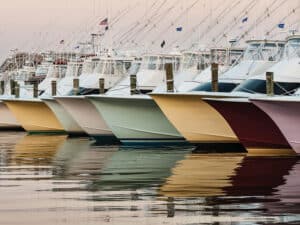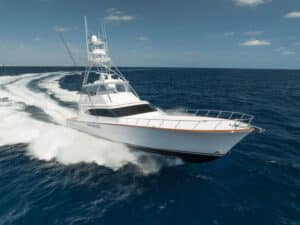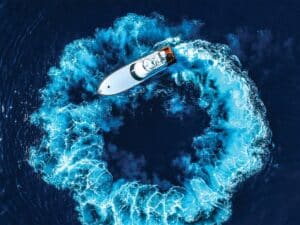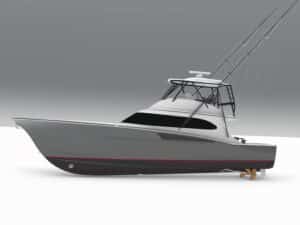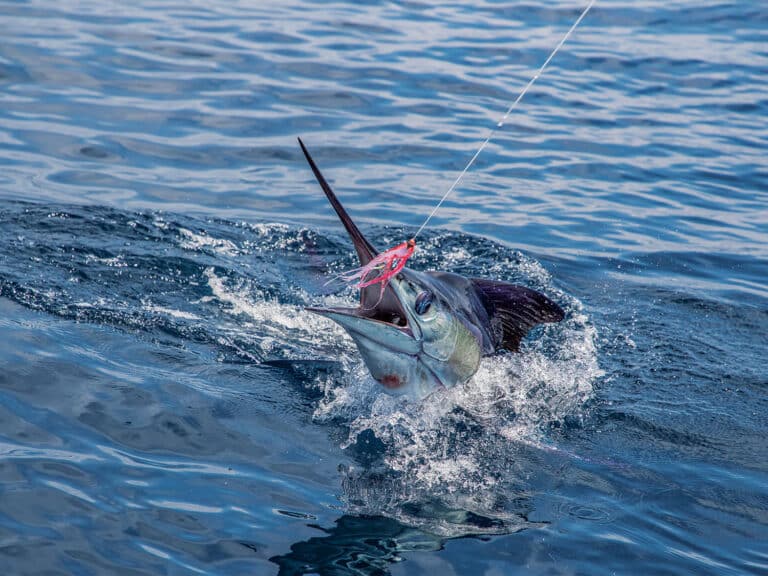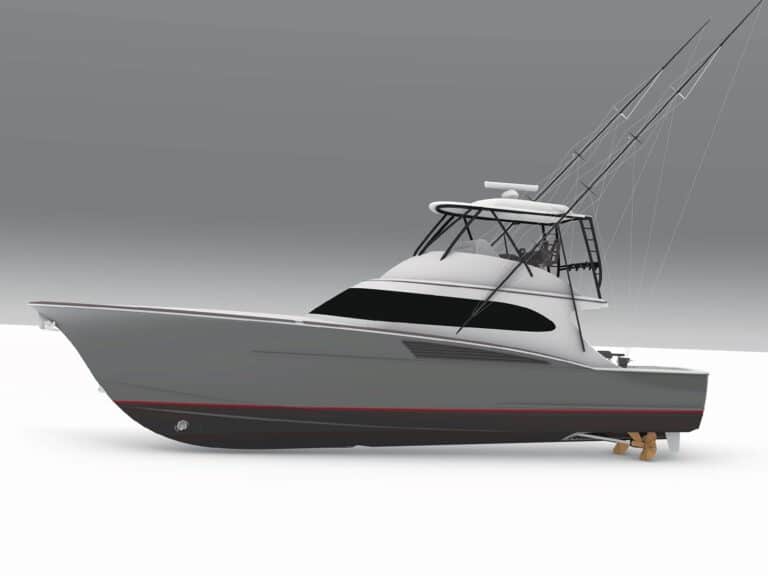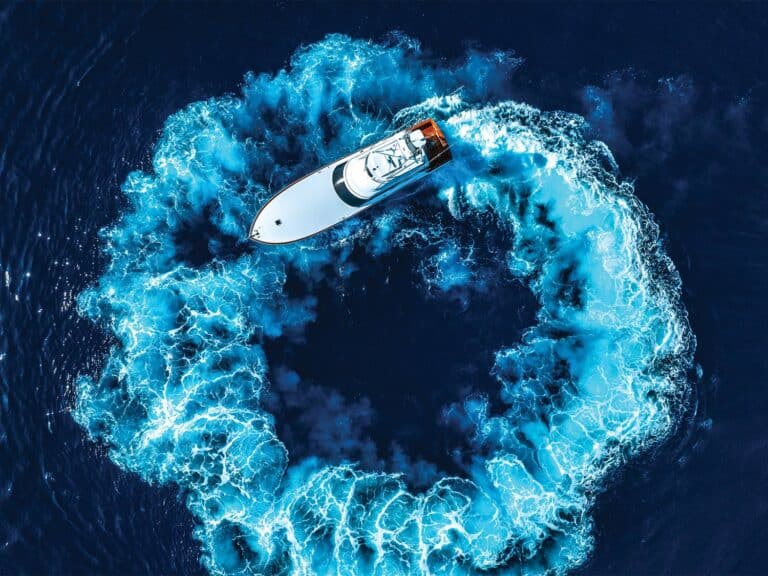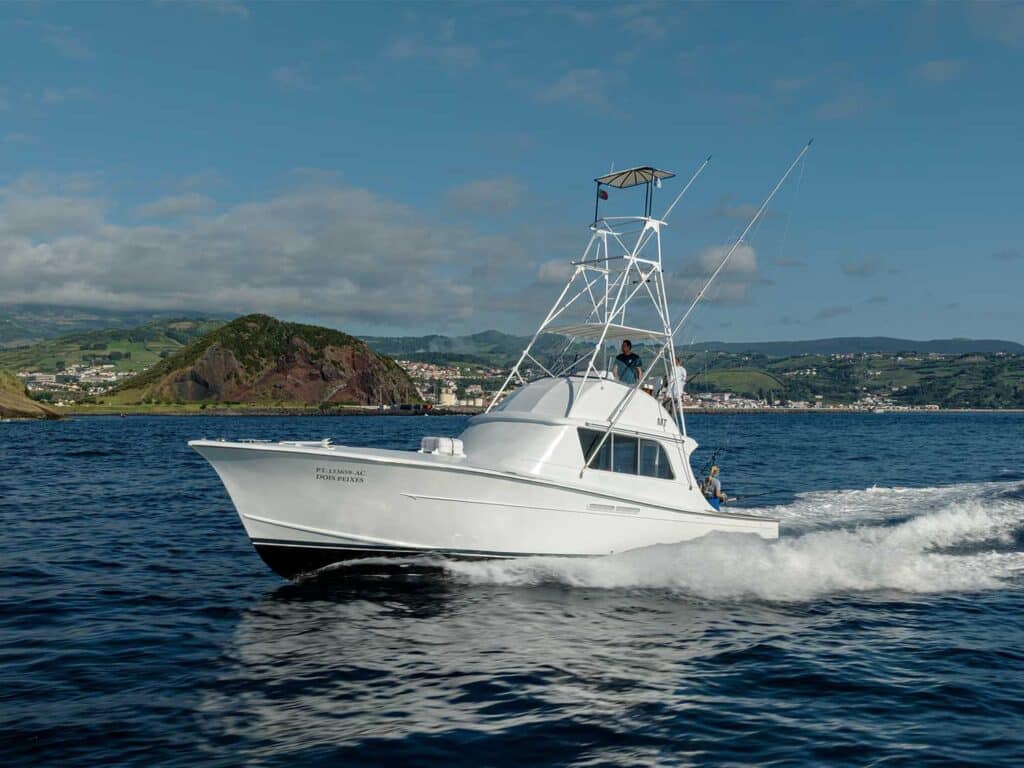
Special delivery: Sign up for the free Marlin email newsletter. Subscribe to Marlin magazine and get a year of highly collectible, keepsake editions – plus access to the digital edition and archives.
There’s something both nostalgic and romantic about old boats, whether you see one in the water at a marina, in dry dock, or maybe even in a grassy field along a country road. It’s not hard to imagine the life the vessel has had over the years—the seas it’s traveled, the fish it’s caught, and the people who sailed it in good weather and bad. Some old boats have the classic lines and the fishing history that seem to defy those musings; indeed, their history sets them apart from the rest. One old boat aptly worthy of that description is Double Header, as is the incredible story of how she made it to the islands of the Azores, 900 miles west of Portugal, after a decade of neglect, not only to be brought back to life but also to fish hard once again.
The Azores have been known as one of the sport’s top blue marlin fishing spots for more than 40 years. Horta, on the island of Faial, is located in the central island group, which lies close to the Mid-Atlantic Ridge, a long underwater mountain ridge that plunges from 6,500 to more than 11,000 feet, with canyons and shelves that seem to magnetically attract blue marlin and tuna. Formed through volcanic eruptions over the centuries, these islands are very biodiverse and are ecologically one of the cleanest, most protected places on Earth.
A Legendary Angler Emerges
Stephen Sloan was a renowned angler, a conservationist, an author and a board member of many conservation organizations, including the IGFA. He began his fishing career with a bamboo pole and thread in New York City’s Central Park lake as a young child. Sloan was immediately enthralled by the thrill and continued fishing in fresh water until after graduating from college, when he fished in the Florida Keys and became captivated with light-tackle angling for snook, tarpon, bonefish, permit and largemouth bass. From there, he began a lifelong quest on light tackle and fly. In his career, Sloan captured 44 IGFA world records, with seven still standing today. His most notable catches include an 862-pound black marlin on 30-pound-test off Lizard Island, Australia, in 1978, and a blue shark that weighed 251 pounds, caught on 6-pound-test off Montauk, New York, in 1981—one of Sloan’s seven active world records.
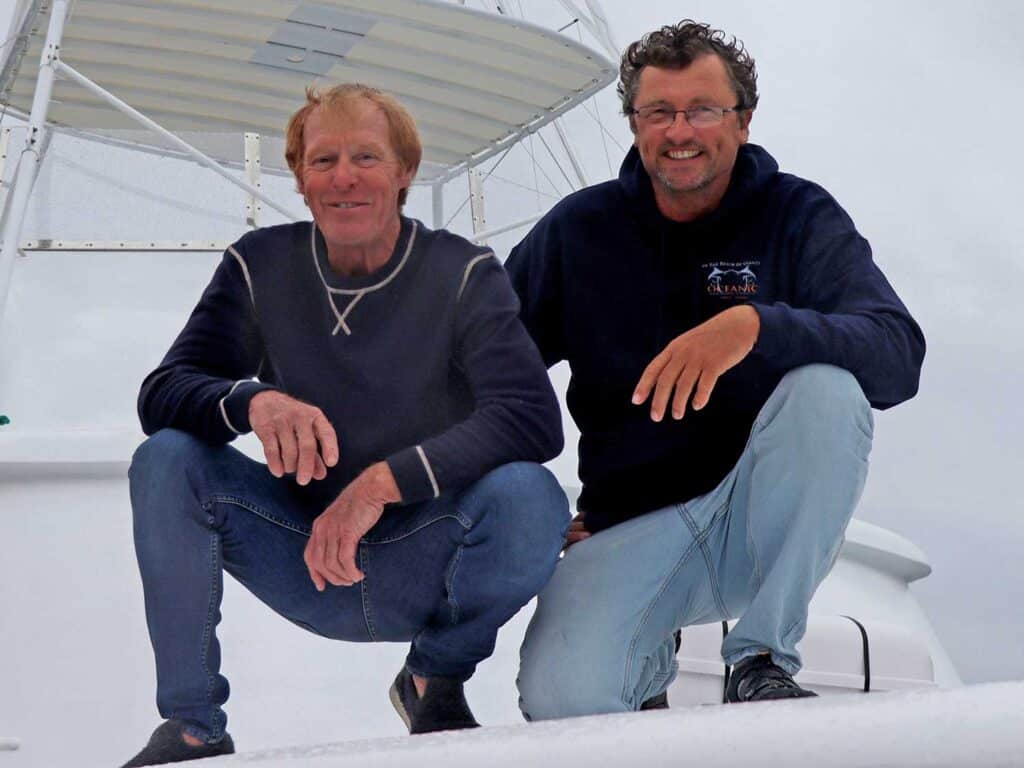
Sloan was also a master at analyzing each component of the ocean, the tackle and bait, as well as the harmonics of the boat. He was a huge champion of conservation, working with John Rybovich in the late 1970s to introduce catch-and-release to the IGFA in tournaments as well as in everyday recreational angling. The two also pioneered kite-fishing for sailfish in Palm Beach, Florida, during those early days.
Years after Stephen Sloan passed away from cancer in 2005 at the age of 72, his only son, Bob, and Bob’s youngest son, Teddy, decided to charter Brasilia, fishing out of Horta and run by Capt. Les Gallagher. The two arrived late one night in August 2016 in preparation for their trip the next day. Bob Sloan recalls: “We got into Horta late at night after a long flight, and I went straight to bed at the Canal Hotel. The next morning, I woke up and opened the curtains to look out over the marina. Sitting in the boatyard, on the same custom cradle that brought her over on a ship in the mid-1980s, was Double Header, my dad’s boat that he co-owned with Ted Naftzger. Her name had been changed to Dois Peixes (Portuguese for ‘two fish’), but I would have known her anywhere.”
He continued: “Just seeing her sitting there brought back a flood of memories, and it was hard to think about anything else. I brought up the subject of Double Header the next day. Les filled me in on what he knew and said her owner had her up for sale. We talked about a lot of things that day, but my mind kept returning to that old 43-footer.”
Double Header was a 1968 43-foot Daytona designed by Jack Hargrave, a builder who was well known for his modern yacht designs, which many said were well before their time. It was built in Florida by Daytona Boat Works. Stephen Sloan had purchased the boat in the mid-70s and hired Capt. Donald Merton as the skipper. It was Merton who had planned for Sloan and Naftzger to ship it to Horta in 1986 after they heard of the incredible fishery for giant marlin and tuna from Capt. Chuck Tedder, an American pioneer of marlin fishing who first came to Horta the previous year. Later, Tedder wrote about his first season: “We fished for nearly four months, and the charters caught 103 blue marlin that season. A local fisherman guided us out to the north, where we got into a school of bluefin tuna while marlin fishing. As the current slacked off, the swordfish rose to the surface. There was another day when the seas were huge, but every bite resulted in a blue marlin. In short, the fishing in the Azores was nothing short of amazing.”
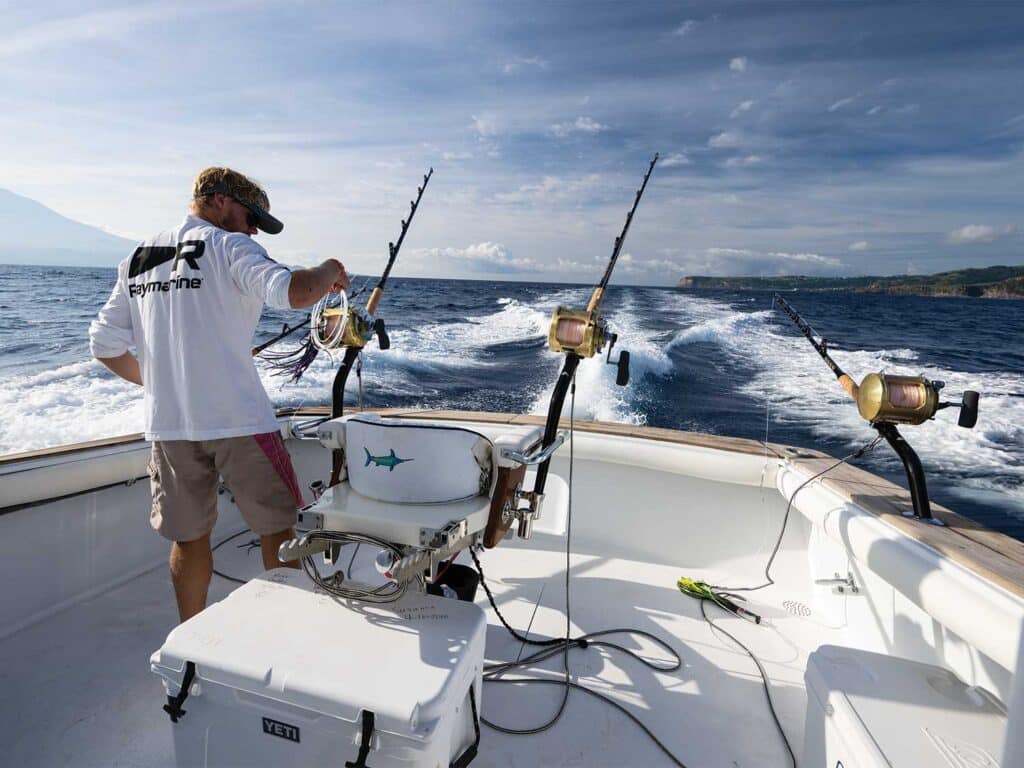
In the mid-1990s, Sloan sold Double Header to his friend, renowned IGFA member and angler Leo Cloostermans, who changed the boat’s name to Dois Peixes. With Merton still at the helm, Cloostermans racked up four blue marlin line-class records in the waters around Horta, including a 573-pounder on 4-pound in 1995 and a 604-pound blue on 12-pound in 1992. Both records still stand today.
The Rebuild Begins
Fast-forward to 2018. Paul Scopinich, president of Scopinich Fighting Chairs and grandson in a fifth-generation family boatbuilding business known as Scopinich Boat Works, heard of the growing charter fleet in Horta. Big tuna and blue marlin were being caught in numbers previously unheard of in other places, so he chartered Gallagher on Brasilia, and they spent a few days fishing together. Scopinich recalled, “Les really wanted me to look at the boat and let him know if it was a lost cause. She was a proven fish catcher and had caught more than a few IGFA world records over the years, and she was also the perfect size for a charter boat. So, at the end of the day, we stopped by to take a closer look. The boat was a disaster: There was black smoke damage throughout from a fire in 1988, missing hatch covers, water and oil in the engine room, and just abject neglect.” They both decided to think about it. Double Header waited patiently on its cradle.
Gallagher came to Horta when he was just 18 and fresh out of high school, with just one ambition: to experience big-game fishing on the open ocean. It was in these storied waters where he first learned and then honed his skills for blue marlin, bigeye, yellowfin and bluefin tuna. He became captain at age 20 and went on to see great success in his career, catching 112 blue marlin in 69 days of fishing in 1996, a local record at the time. In 1997, Gallagher skippered Xacara and, along with mate Zak Conde, landed a 1,310-pound blue marlin, thought to be the largest ever weighed in Faial.
Scopinich continued to make his annual trips to Horta, fishing with Gallagher on Brasilia each time. While in Horta, he and Gallagher would visit the boat, take numerous photos and measurements, and analyze the best way to go about the restoration. Scopinich said, “The boat was a disaster, but the lines were beautiful. We felt it would be worth the time and effort to rebuild her. We intended to keep as many of the original components of the boat as possible. We surveyed the boat ourselves intensively several times before we finally came up with a restoration plan.”
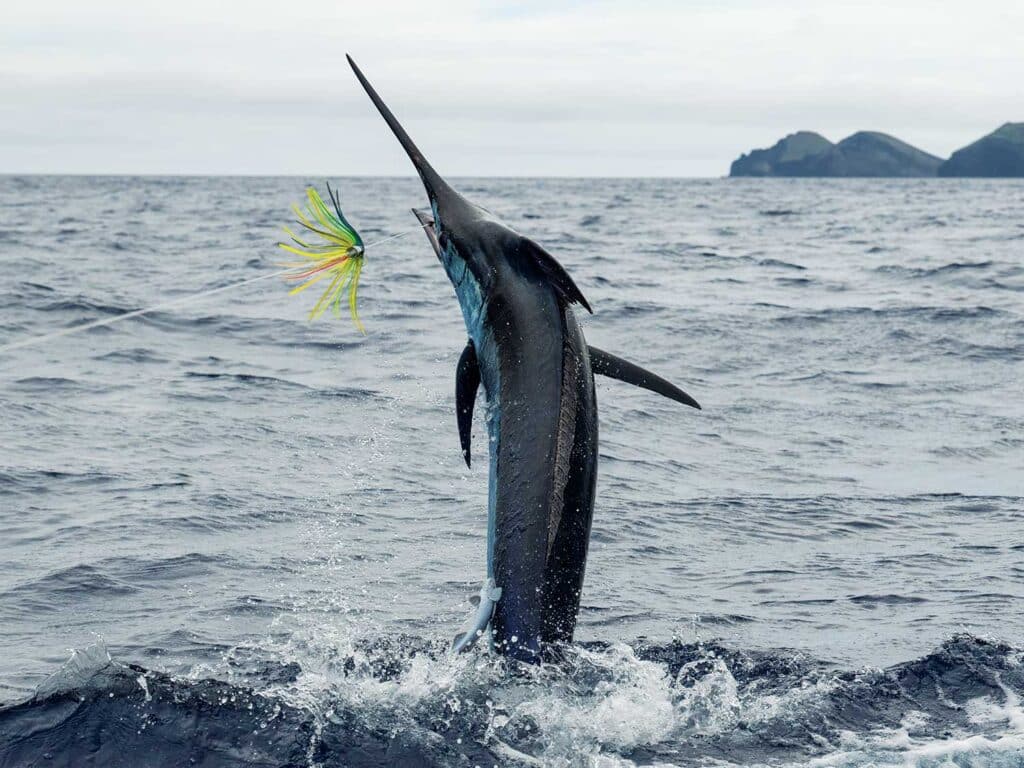
The Work Continues
“We met with Michael Rybovich in Florida, who had worked on the boat in the 1970s, and so we got schooled a bit,” Scopinich says. “Michael agreed that it was a worthy project, amid the astronomical challenge of coordinating all that was needed, getting it halfway around the world, and doing the massive amount of work to complete the restoration. We kept trying to locate craftsmen who had perhaps worked on the boat or were familiar with it. And we started looking for Bob Sloan, Stephen’s only son, and reached out to him on LinkedIn. He called us back within minutes, was very excited to hear about our plan, and said he would help in any way he could. He provided a lot of historic photos and info to help guide us.”
The process, however, was complicated. The boat had been built in Florida, but the tools and measurements in Europe were all metric, so everyone who traveled to work on the boat had to bring tape measures, tools, fasteners and hoses to fit, always in multiple suitcases. At the heart of the restoration was maintaining the integrity of Hargrave’s original design—restoring the air intake vents, the Burma teak covering boards, and the original Rybovich tower—as close as possible.
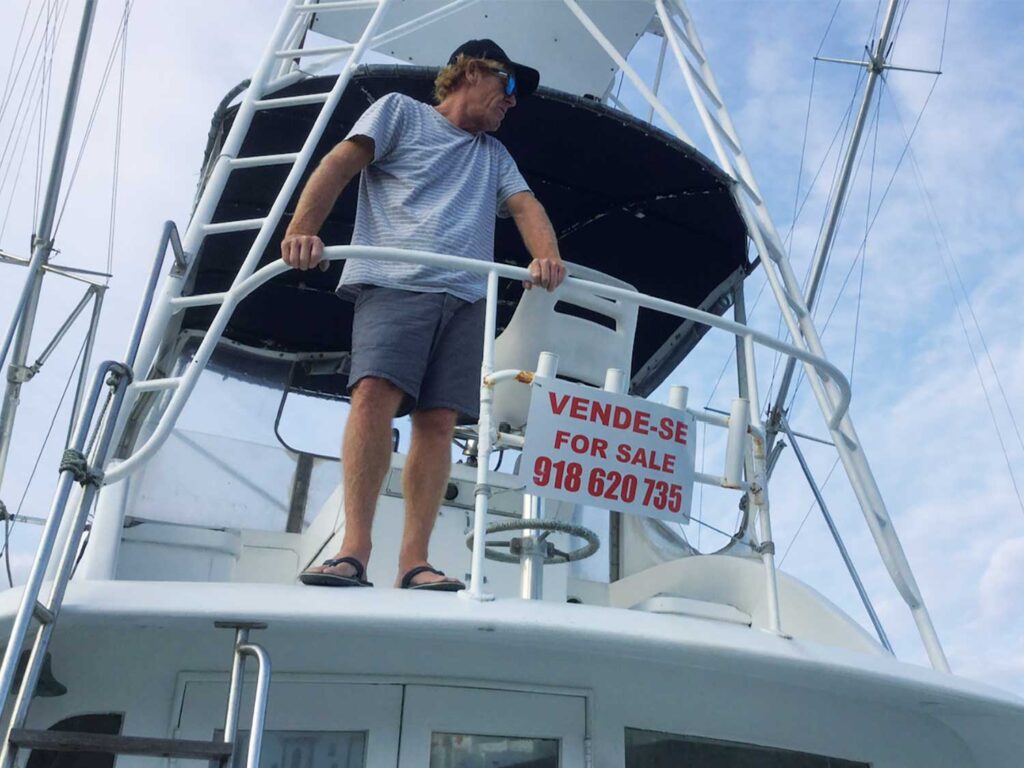
One departure from the norm was in the choice of propulsion. Scopinich explained the reasoning they chose the new Fiat Powertrain Technologies engines, saying, “FPT had just installed their modern, cleaner and more powerful diesel engines in Hull No. 1 of the Scopinich 35, so I was familiar with them. We couldn’t be happier with the NEF-67 420 hp power and TwinDisc gears. They replaced the old 425 hp 903s, with a total weight reduction of around 2,000 pounds. Fuel economy is excellent; we’re burning around 30 percent less than similarly sized conventional engines. And they come with a 10,000-hour guarantee on most of the emissions-related parts, including turbos and injectors, which is all incredibly important in this eco-sensitive part of the world.”
When Max Illing from FPT arrived in Horta to do the final engine testing and certify their warranty, they sea-trialed the boat on a particularly nasty weather day, with high winds and small waterspouts swirling inside the marina. He said afterward: “These were the worst seas I’ve ever seen on a sea trial. We were heading down sea and still topped out at 31 knots. When it started to feel dangerous, we headed back to port.”
Scopinich continues, “We had a lot of demo work to do before the container ship arrived from the US with everything we needed for the rebuild. Les and his mate Max Ostrande started by removing 10 years’ worth of oil, water, rust and corrosion before we could paint the engine room and start working on modifying the stringer system and engine mounts that would accommodate the FPT engines.” They removed the original Rybovich tuna tower, sandblasted it and painted it the original white, all under a makeshift workshop consisting of a large tarp supported by PVC pipes in the marina.
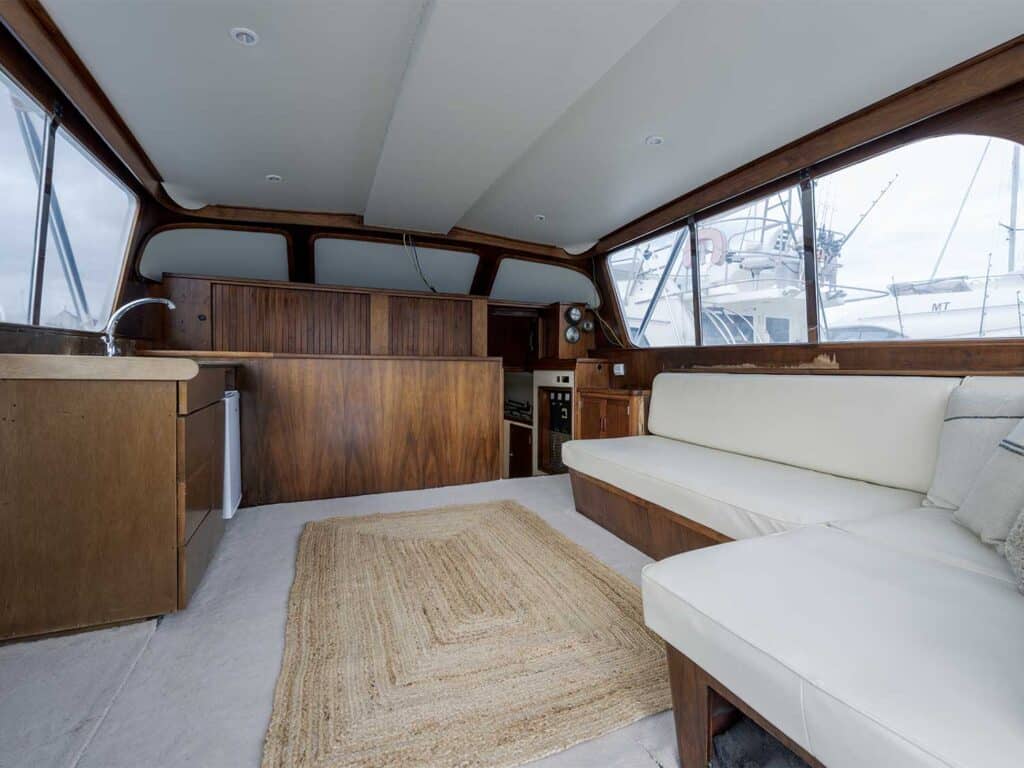
The hands-on restoration work began at the end of January 2023 and continued feverishly until their first charter on September 6, 2023. They still have a bit of interior work to finish over the winter, but Double Header was ready to fish again. “Our season was cut to basically 30 days of fishing, and we still caught 30 blue marlin,” Gallagher explained. “But it was a spectacular season here, with some charter boats releasing multiple big blues in one day, many in the 600-plus-pound range. There were large aggregations of mackerel, notably on the coastal shelves and along the edges of the banks, which always bodes well for a great marlin season.”
Read Next: Check out more on the amazing Azores.
Finally Fishing
I joined Scopinich, Gallagher, Ostrande and Gaspar Macklis, who also worked on the boat during the refit, for a few days of fishing at the end of September 2023. Scopinich was pitch-baiting on 50-pound-test, and in 12 days of fishing, we released 12 blue marlin, five of them over 600 pounds. The boat ran extremely well, and the ride was very comfortable, even in seas that occasionally reached 10 to 12 feet. All the work, headaches, delays and doubts disappeared when Double Header was once more put to work, beautifully doing what it was built to do, some 55 years later.
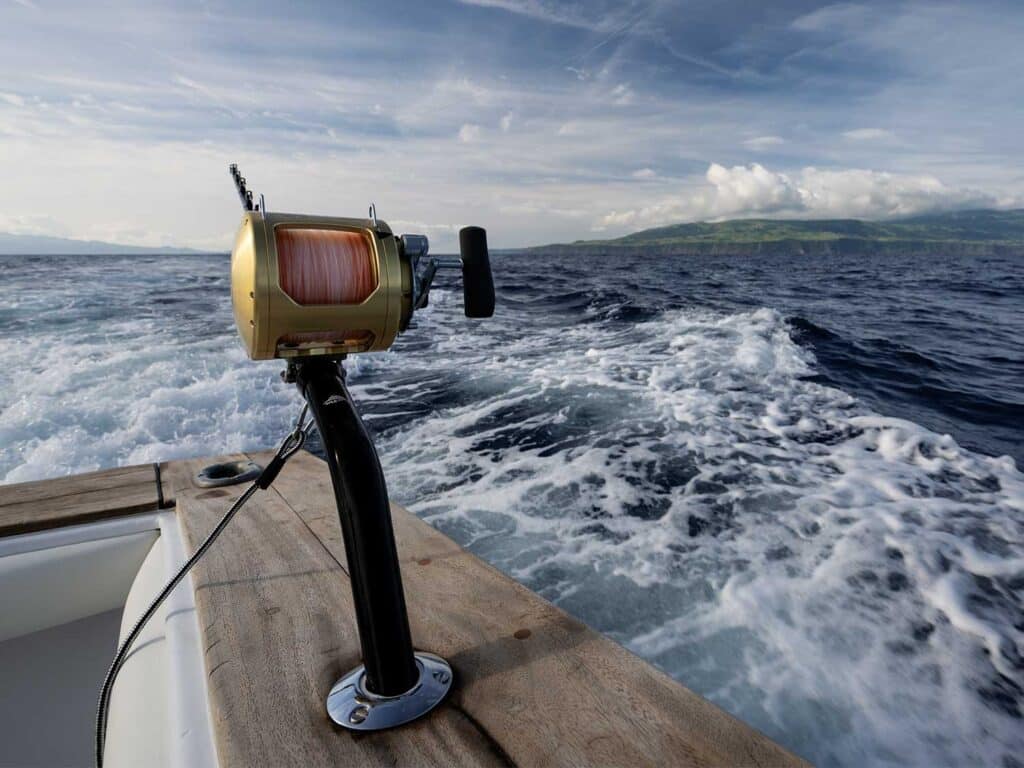
Gallagher is still working on changing the name back to Double Header, a pursuit that in the Azores takes time and patience. He’s hoping that the switch will be accomplished by the start of the next charter season in 2024. But rest assured, Double Header is back, better than new, and already making memories for its charter guests fishing the bountiful waters of the Azores. It’s something I’m certain Stephen Sloan is celebrating.
